Name Texas Captured 4 April 1865 Draft 13.5 ft (4.1 m) Launched January 1865 | Namesake State of Texas Fate sold, 15 October 1867 Length 66 m Beam 15 m | |
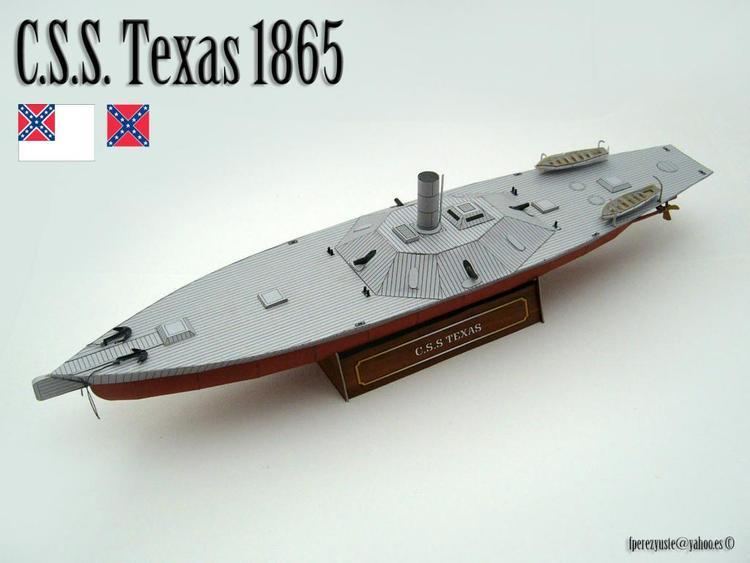 | ||
Class and type Columbia-class casemate ironclad | ||
CSS Texas was a Columbia-class casemate ironclad built for the Confederate Navy during the American Civil War. Not begun until 1864, she saw no action before being captured by Union forces while still fitting out. CSS Texas was reputed to have been one of the very best constructed Confederate ironclads, second only to CSS Mississippi.
Contents
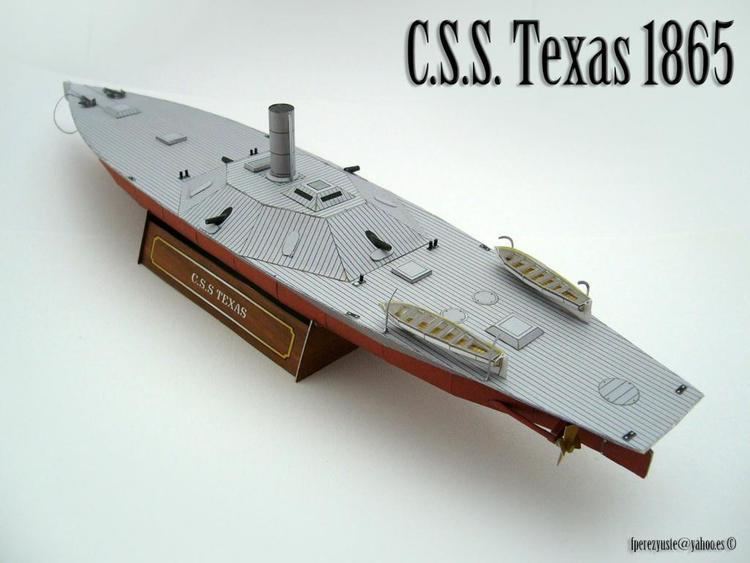
History
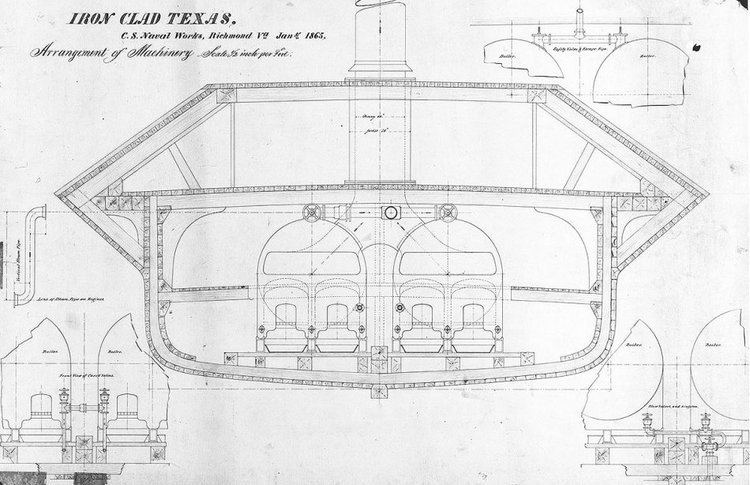
The keel for CSS Texas was laid down at Richmond, Virginia. She was launched in January 1865. At the time of Robert E. Lee's evacuation of Richmond on 3 April 1865, she was left unfinished but intact at the Richmond Navy Yard, one of only two vessels which escaped destruction by the retreating Confederate forces. Captured when the city fell the following day, the ironclad was taken into the United States Navy, but saw no active service. Texas was laid up at Norfolk until 15 October 1867 when she was sold at auction for scrapping to J. N. Leonard & Co. of New Haven, Connecticut.
Design

The casemate of Texas was roughly octagonal, rather than being a sloped, rectangular, armored box, as on earlier Confederate ironclads; during construction, it was shortened due to critical war materials shortages. It fitted snugly around her eight gunport positions, six of which were to be used with two pivot cannons, each firing from three forward or aft positions.
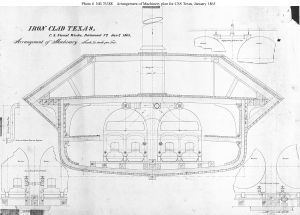
Details of her armament are sketchy, but her sister ironclad, CSS Tennessee II, carried four 6.4-inch (163 mm) Brooke rifles, two 7.0-inch (178 mm) Brooke rifles, and a bolted-on spar torpedo fitted to her bow. Tennessee II's armor was three layers of 2-inch (51 mm) iron plate, and instead of being bolted to her deck, the pilot house formed a seamless extension of her sloped side-armor. Tennessee II's top speed was about 5 knots (9.3 km/h; 5.8 mph), according to some sources, and her crew numbered about 133 sailors. However, it is unclear how closely Texas would have resembled her sister ironclad if she had been completed.

Other sources gave Texas a (projected) top speed of about 10 knots (19 km/h; 12 mph), and these note that both Tennessee II and Texas differed from each other in their final details due to a lack of available materials, notably the iron plate for her armor; her cannons and engines were also different. During her construction design improvements were incorporated from lessons learned in combat with the U.S. Navy.
Popular culture
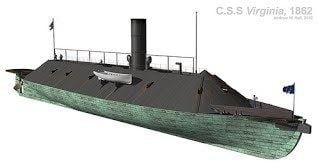
CSS Texas is featured prominently in the 2005 film Sahara, based on the best-selling book of the same name by Clive Cussler, where a pair of treasure hunters search for what in movie and novel was presumed a mythical Civil War ironclad ship. In this fictionalized version of historical events and unlike its historical counterpart, CSS Texas was close to completion and under the command of Captain Mason Tombs made it out of Richmond just before the fall of the city, battling itself through the Union blockade of the James River and carrying what remained of the Confederate war treasury in gold bullion, the hoard the treasure hunters are after. The ship, its contents and the mortal remains of its crew, they having succumbed to a tropical disease, are a century later discovered buried in an old, dried up riverbed of the Niger River, deep in western Africa (thereby making the implausible assumption that the ironclad had somehow managed to cross the Atlantic Ocean on its own accord). Ship and contents are at the end of the movie remanded in the custody of the Smithsonian Institution, but not before the treasure hunters have absconded with the hoard. Incidentally, the gold bullion plot line is another take on the so-called "Confederate gold" myth.
Two recreations of CSS Texas were constructed for the movie, a scale model and full sized exterior and interior sets, but it should be noted that their outer appearances did not correspond with what is known about the historical vessel; instead the vessel as represented in the movie had in outer appearance, especially in side profile, more in common with the original CSS Tennessee, famed for its part in the Battle of Mobile Bay, and which was endowed with a substantially larger casemate.
